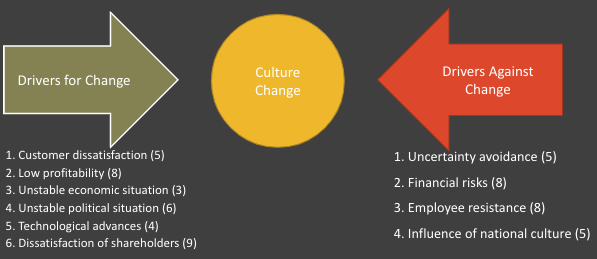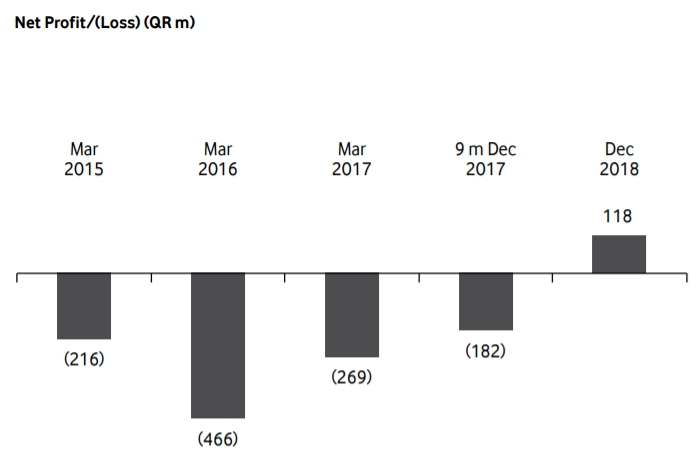Introduction
This presentation aims at analyzing the organizational change in Vodafone Qatar in 2018. On February 26, 2018, before publishing the annual report, Vodafone Qatar announced that it would exit the business in Qatar and pass it its joint venture, the Qatar Foundation (Holton, 2018). This presentation discusses the process of change, its drivers, and resisting forces.
In order to achieve the purpose, four objectives were outlined, including discussing the concepts of organizational change and change management, describing the organizational change in Vodafone Qatar, assessing the change process in light of change theories, and explaining change outcomes.
Organizational Change
Defining the key concepts is crucial for understanding the scope of the assessment. We will look at two definitions, including organizational change and change management. Organizational change can be defined as “Change in organizational structure, its system/sub-systems, employees and relation of between them in a planned or non-planned way” (Bejinariu et al., 2017, p. 322). Burnes (2005) differentiates between managed change within an organization, which is described and implemented by the management team, and spontaneous self-organized change that is independent of the efforts of the managing personnel. All companies experience constant change regardless of whether change management practices are employed or not. Managing change is crucial to ensure that change leads to the desired consequences.
Change Management
Moran and Brightman (2001) define change management as “the process of continually renewing an organization’s direction, structure, and capabilities to serve the ever-changing needs of external and internal customers” (p. 111). Voehl and Harrington (2017) define change management as methods and manners used by a company to describe and implement change in different aspects of business, including both internal and external processes. Change management usually includes the ideas of managing employees’ behavior and opinions, establishing steps crucial for completing the change, and measuring the success of the change. Thus, change management is closely correlated with the concept of organizational change and project management.
Case Description
It is also crucial to outline the factors that affect the performance of the company. In 2018, the head company, Vodafone, experienced a decline in financial performance and associated dissatisfaction of investors, which forced it to sell off its shares in the underperforming countries. Additionally, the customers of the company complained about bad coverage, and the workplace culture was affected by increased uncertainty avoidance and the influence of the national culture on the workplace culture.
Company Background
Before the change is discussed, it is crucial to introduce a brief history of the company.
Vodafone Qatar received its license in 2007, becoming the only alternative to Ooredoo. The company began its operations in 2009, providing GSM and 3G networks. In 2014, the company launched its LTE; however, its expansion was very slow. In 2015, Vodafone covered only cities, while Ooredoo had around 80% of coverage, which negatively affected the loyalty and satisfaction of the customers. Since the company was experiencing losses since its launch, Vodafone decided to sell its shares in 2018 to Qatar Foundation, which made the company 95% owned by Qatari investors. In 2018, the company launched the 5G network and CARE initiative, which changed the workplace culture. In 2019, the company tied with Ooredoo in terms of coverage and reported its first profits.
Environmental Analysis
It is critical to conduct an environmental analysis to understand the drivers for change and identify resistance to change. PEST analysis was conducted to evaluate external factors affecting the company. The analysis revealed the following political, economic, social, and technological factors:
Political factors
- The company is affected by the increased uncertainty associated with the embargo of Qatar.
- Additionally, the relationships with the Western countries became tense due to the embargo.
Economic factors
- On the one hand, the company experienced increased economic volatility due to the political conflict, which resulted in negative growth of GDP in 2017.
- On the other hand, GDP was still among the highest in the world.
Social factors
- Qatari customers developed a need for improved coverage to stay connected everywhere.
- Social media in Qatar was growing hard.
Technological factors
- 5G technology was introduced in Qatar in 2018.
- An increased number of social media was introduced in Qatar.
Lewin’s Force Field Model
Lewin’s force field model was used to analyze change. According to the model, change managers need to identify drivers for and against change, assign scores to these factors, and make the final decision concerning the implementation of change. This slide provides an analysis of the change using Lewin’s force field model. The sum of scores on the left is 35, while the sum of scores on the right is 26, which implies that the drivers for change were stronger in 2018 before the change was implemented.

Lewin’s Change Model
The change process was analyzed using Lewin’s Theory of Planned Change. According to this theory, all changes go through three stages, including unfreezing, changing, and refreezing. During the first stage, Vodafone Qatar disseminated knowledge associated with the problems of the current performance of the company. This helped the stakeholders to understand the urgency of change. After that, a vision for change was created to help everyone understand how exactly things were going to improve. After that, the managers created a plan for culture change and implemented it. During the refreezing stage, the managers evaluated the results, made small corrections, and created official policies to seal new norms and values.
New Culture Achieved Through Change
The new culture that was implemented had a positive impact on the company. The new features of the workplace culture were customer centricity, which increased workplace satisfaction of employees, decreased influence of the national culture of Qatar, improved efficiency of the workforce, and a long-term orientation, which allowed long-term planning. According to Hofstede’s cultural dimensions model, the negative points of Qatar’s national culture were decreased individual competition, high uncertainty avoidance, and conservatism. These aspects of national culture were improved.
Outcomes of Change
The results of the change were outstanding and fast. In 2018, the company reported positive profitability for the first time in the last four years. Additionally, the company initiated the 5G network launch successfully. The network coverage increased to 86%, which increased customer satisfaction.

Why Did Change Succeed?
The change resulted in success for several reasons. First, the governing team assessed the situation adequately and had a clear understanding of external and internal forces affecting the company. Second, the leaders had a clear understanding of stakeholder needs, which allowed the company to plan change according to these needs. Third, the change was planned according to the most appropriate theoretical models and best practices. Finally, Vodafone Qatar had the best management team that allowed effective change.
Conclusion
In conclusion, the case study provided an excellent example of carefully managed change. It revealed that change management is crucial for reacting to quickly changing internal and external environments. Change in Vodafone Qatar was successful due to careful planning, needs assessment, outstanding leadership, and excellent planning.
Sources
Bandi, S. (2018) How Change Management Is Inevitable For Any Organization.
Bejinariu, A. C. et al. (2017) ‘Organizational change management–concepts definitions and approaches inventory’, Management Challenges in a Network Economy: Proceedings of the MakeLearn and TIIM International Conference (pp. 321-330).
Burnes, B. (2005) ‘Complexity theories and organizational change’, International Journal of Management Reviews, 7(2), pp. 73-90.
Holton, K. (2018) Vodafone sells out of Qatar for $371mln, brand will remain.
Hofstede Insights (no date) Country comparison.
Lewin, K. (2013). The conceptual representation and the measurement of psychological forces. Eastford: Martino Fine Books.
Shirey, M. R. (2013) ‘Lewin’s theory of planned change as a strategic resource’, JONA: The Journal of Nursing Administration, 43(2), pp. 69-72.
Vodafone Qatar (2019) Annual report 2018.